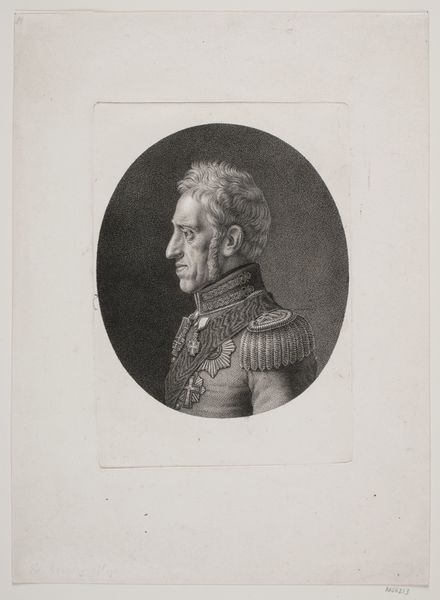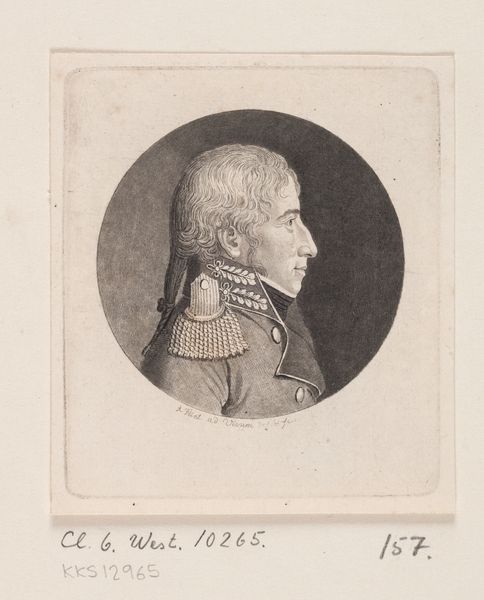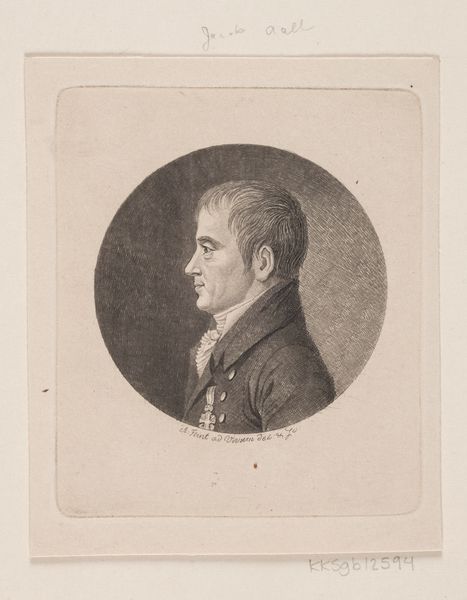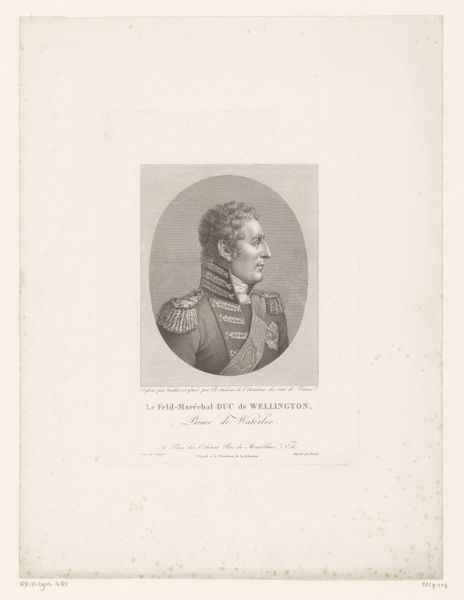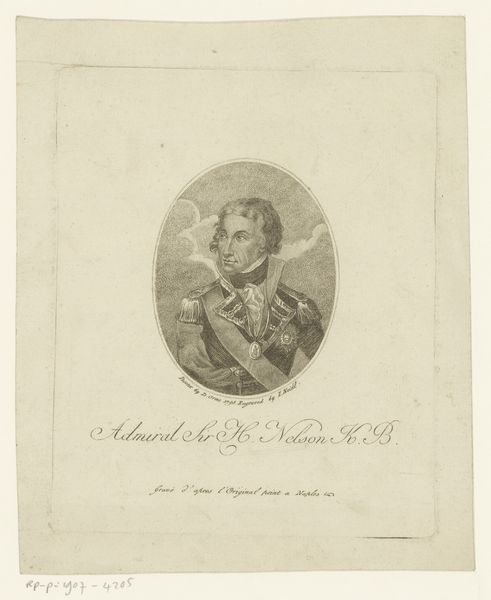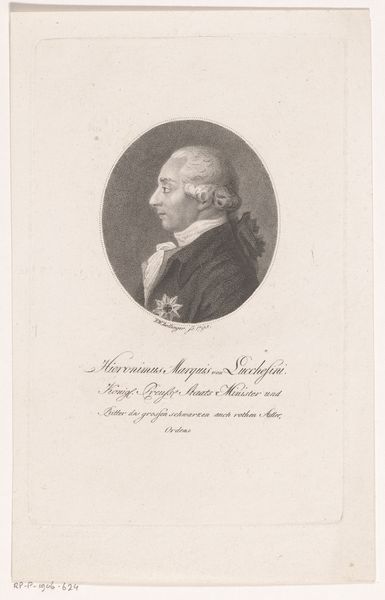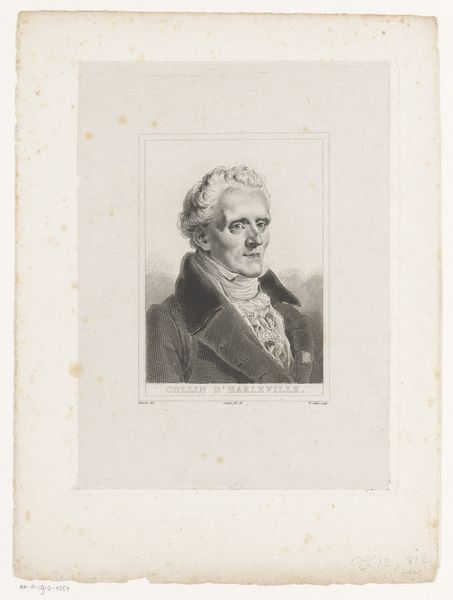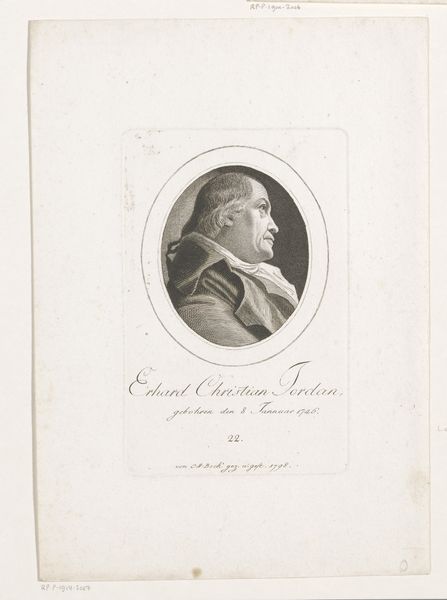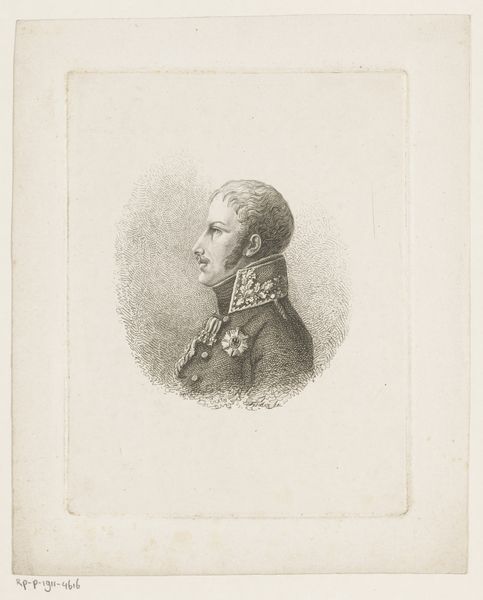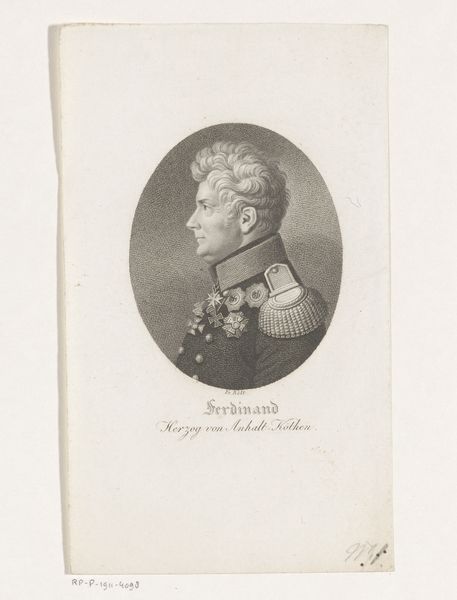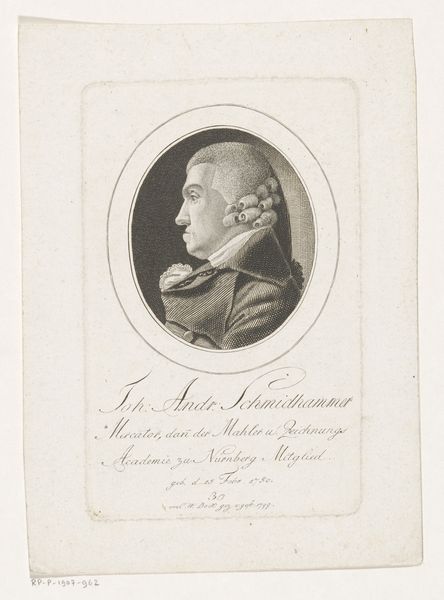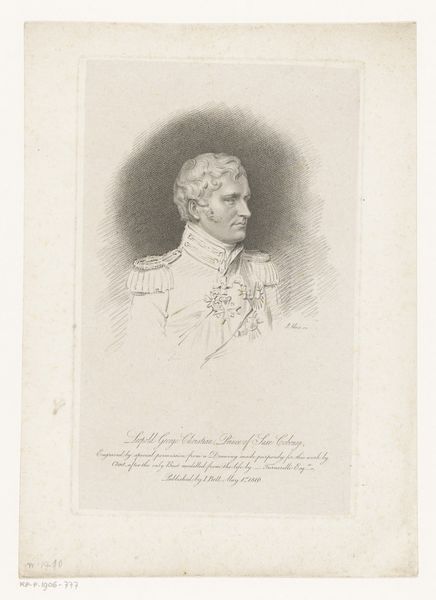
Portret van Ferdinand VII van Spanje als prins van Asturië 1789 - 1808
0:00
0:00
johanncarlbock
Rijksmuseum
print, engraving
#
portrait
#
neoclacissism
# print
#
old engraving style
#
history-painting
#
engraving
Dimensions: height 129 mm, width 103 mm
Copyright: Rijks Museum: Open Domain
Curator: This is a print entitled “Portret van Ferdinand VII van Spanje als prins van Asturië," placing Ferdinand VII of Spain, in his younger years as Prince. It was created sometime between 1789 and 1808. The artist is Johann Carl Bock. Editor: He looks a bit… constipated. That's the immediate vibe I'm getting. Also, very stiff, and formal in that oh-so-18th-century way. Lots of ornate costume, the kind that probably weighed a ton. Curator: Right. These formal portrait engravings were crucial for propagating a specific image of power and authority. Bock situates Ferdinand within the Neoclassical movement, consciously drawing on aesthetics from classical antiquity to evoke ideas of empire and dynasty. Note the oval frame motif—a familiar nod to Roman portraiture. Editor: But even with that "empire" framing, there's something… almost fragile about it. Like a porcelain doll that’s dressed in war gear. The shading around the face is soft, almost hesitant. He looks airbrushed, but by hand, using meticulous engraving! Curator: This evokes key questions regarding the politics of representation at this moment. It is not only about *who* is depicted, but also about *how*. The print flattens lived experiences, solidifying hierarchies while minimizing the sitter’s individuality, race, and potential to challenge oppressive norms. This print offers us a narrow view into the culture of power and its complex visual cues. Editor: All those medals look heavy, emotionally too. Maybe that's the key to the “constipated” vibe! A young man carrying the weight of a future crown… Or maybe he just needs more fiber in his diet! Curator: He would ultimately prove to be a rather disastrous ruler in many respects, marked by periods of absolutist rule and political instability. So yes, the fiber could have helped... Editor: Seeing it with this awareness does add an extra layer. Makes me think about the gap between image and reality, especially then, when image-making was such a curated business. Curator: Precisely. Visual representation of power needs consistent challenging if it seeks to maintain genuine accountability. Editor: Agreed. Well, it’s always fun to dissect a portrait, peel back the layers. It really underscores how art isn’t just *about* beauty, but about power, perception, and so much more.
Comments
No comments
Be the first to comment and join the conversation on the ultimate creative platform.
